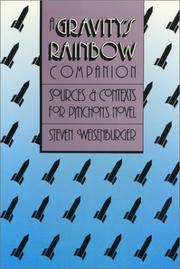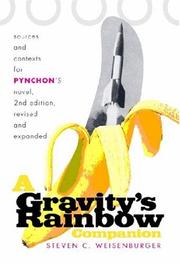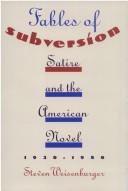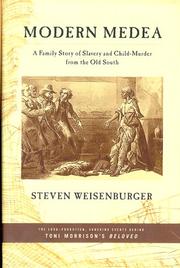| Listing 1 - 6 of 6 |
Sort by
|

ISBN: 0820310263 Year: 1988 Publisher: Athens, Ga University of Georgia Press
Abstract | Keywords | Export | Availability | Bookmark
 Loading...
Loading...Choose an application
- Reference Manager
- EndNote
- RefWorks (Direct export to RefWorks)

ISBN: 9780820328119 9780820328072 0820328073 Year: 2006 Publisher: Athens London University of Georgia Press
Abstract | Keywords | Export | Availability | Bookmark
 Loading...
Loading...Choose an application
- Reference Manager
- EndNote
- RefWorks (Direct export to RefWorks)

ISBN: 0820316687 Year: 1995 Publisher: Athens ; London University of Georgia Press
Abstract | Keywords | Export | Availability | Bookmark
 Loading...
Loading...Choose an application
- Reference Manager
- EndNote
- RefWorks (Direct export to RefWorks)
Fiction --- American literature --- anno 1900-1999 --- Black humor (Literature) --- American fiction --- Satire, American --- Postmodernism (Literature) --- Modernism (Literature) --- Social norms in literature. --- Dissenters in literature. --- Black humor. --- History and criticism. --- 20th century --- History and criticism --- Satire [American ] --- United States --- West, Nathanael --- Criticism and interpretation --- O'Connor, Flannery Mary --- Hawkes, John --- Gaddis, William --- Pynchon, Thomas --- Coover, Robert Lowell --- Postmodernisme et littérature --- Satire américaine --- Roman américain --- Humour noir (littérature) --- États-Unis --- Histoire et critique --- 20e siècle --- Postmodernisme et littérature --- Satire américaine --- Roman américain --- Humour noir (littérature) --- États-Unis --- 20e siècle

ISBN: 0809069539 Year: 1998 Publisher: New York, N.Y. Hill and Wang
Abstract | Keywords | Export | Availability | Bookmark
 Loading...
Loading...Choose an application
- Reference Manager
- EndNote
- RefWorks (Direct export to RefWorks)
Book
ISBN: 9780820335087 9780820345956 0820345954 0820346551 9780820346557 0820335088 1306290708 Year: 2013 Publisher: Athens
Abstract | Keywords | Export | Availability | Bookmark
 Loading...
Loading...Choose an application
- Reference Manager
- EndNote
- RefWorks (Direct export to RefWorks)
When published in 1973, Gravity's Rainbow expanded our sense of what the novel could be. Pynchon's extensive references to modern science, history, and culture challenged any reader, while his prose bent the rules for narrative art and his satirical practices taunted U.S. obscenity and pornography statutes. His writing thus enacts freedom even as the book's great theme is domination: humanity's diminished ""chances for freedom"" in a global military-industrial system birthed and set on its feet in World War II. Its symbol: the V-2 rocket. . ""Gravity's Rainbow,"" Domination, and Freedom broadl
Pynchon, Thomas --- English --- Languages & Literatures --- American Literature --- Pynchon, Thomas.

ISBN: 0820328111 0820337641 1283110342 9786613110343 Year: 2006 Publisher: University of Georgia Press
Abstract | Keywords | Export | Availability | Bookmark
 Loading...
Loading...Choose an application
- Reference Manager
- EndNote
- RefWorks (Direct export to RefWorks)
| Listing 1 - 6 of 6 |
Sort by
|

 Search
Search Feedback
Feedback About UniCat
About UniCat  Help
Help News
News